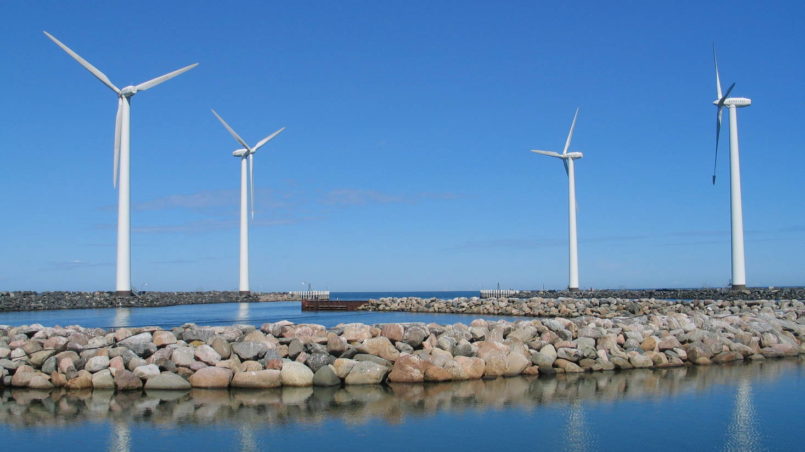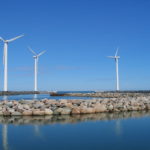New Awareness of Energy – Heading for New Shores

In this part of the series I would like to deal with alternative possibilities of energy production. The situation is dramatic. The destruction of our environment and human intervention in natural processes are happening on such a massive scale that there is discussion of our age deserving to be described as the “Anthropocene“.
Never before, have global upheavals, apart from natural catastrophes, been so profound. Species extinction, climate warming, forest clearing, melting ice caps, droughts and pollution, just to mention a few, demand a radical rethink.
As far as energy generation is concerned, there are alternatives
Let us look at a few technologies that have the potential to minimize our impact on our home planet.
For regenerative energy sources, we automatically think of wind power, photovoltaics, solar thermal energy, hydropower and biomass. These technologies are mature and are already being used on a large scale – and successfully so. Photovoltaics in particular, have made enormous progress in recent years.
By the year 2025 the technology should be so far that solar energy will be cheaper than the energy production from coal. New manufacturing methods enable ultra-thin and flexible solar cells, which can be applied as a film, for example, to roof tiles almost invisibly. Transparent solar films can make windows and entire façades usable for energy generation in the future.
Whole glasshouses or glazed high-rise buildings could thus be converted into solar power plants. The CEO of Tesla, Elon Musk, has just released a new solar roof tile, which means that the entire roof of a house can collect energy. Here, of course, the price question must also be asked.
At an output volume of more than 2000 megawatts of power, it should be able to produce what would correspond to the Hoover Dam’s energy production. For comparison: 1 megawatt is enough to supply 500 to 1000 households with electricity – very roughly estimated.
Geothermal energy – The energy from inside
Not only the sun can provide us with infinitely much energy, the interior of the earth is also full of potential. Geothermal power plants use the heat in the deeper earth layers to provide either heating energy or electricity. Power plants of this type can be used as a basic load plant. The synthesis of fuels would also be easy with this method of energy recovery.
Pioneer in geothermal energy is, not surprisingly, Iceland. With almost 700 megawatts, the country has the largest per capita ratio. The US “reap” 3000 megawatts, the Philippines 1900MW and Indonesia 1200MW of this environmentally friendly energy. Geothermal energy could also play a larger role in Austria in the future. The potential, after all, is present.
Tidal power plants – an ocean of energy
Tidal power plants make use of the changing sea currents at high tide compared to low tide. Turbines admitted in the water can generate electrical energy from these currents. Sihwa-Ho, currently the largest tidal power plant in the world, is located in South Korea and generates enough electricity to supply a city with half a million inhabitants.
Power plants with over 5,000 megawatts of power were already in the planning phase until recently, but were abandoned because of their strong environmental influences. The future of this form of energy generation lies in decentralized, rather small plants.
A look into the future
Well-powered power plants
Hydraulic cranes attached to the coasts can be moved through platforms floating on the surface of the water, thus generating electricity. Hydraulic snake-like small-scale power plants off the coasts are already in use.
A further idea is a kind of concrete funnel, which uses the waves to compress the air contained in it, and thus to operate a wind turbine. There are many ideas, the principles are all simple and the potential should not be underestimated. Practically, these power plants could cover up to 15% of the world’s electricity needs.
Osmosis power plants
The osmosis plant can use the different salt content of bodies of water as a source of energy. Wherever fresh water comes into contact with salt water, as is the case with estuaries into the sea, this technology could be used sensibly. Fresh and salt water are separated into two chambers by a membrane which is water-permeable but not salt-permeable.
Due to the osmosis effect, the fresh water flows into the more saline water and thus builds up pressure, which can be converted back into electrical energy by turbines. Power plants up to 5000 megawatts would be potentially feasible.
OTEC power plants
OTEC, or marine thermal power plants make use of the temperature difference between the upper and lower layers of our seas. A low-boiling-point liquid is evaporated by the warmer surface water and condensed again into the liquid state by the cold water from the deeper layers. The resulting vapor pressure can be used for energy generation.
Realized on a grand scale, these constructions can be used as “basic load power plants”, i.e. power plants that can produce electricity with the highest degree of safety, with gigantic potential. Theoretically, it would be possible to cover the entire energy supply of the world with such installations. This principle was first described in 1881 and implemented as a test facility in 1930.
As we can see, there is no lack of ideas or their feasibility. The possibilities that our environment offers us are by no means exhausted.
In the next article, we shall look at other possibilities of energy production, the decentralization of energy production and the possibilities to become independent of various “big players” in energy business.
Translation into English: Serena Nebo
Credits
| Image | Title | Author | License |
|---|---|---|---|
 |
Windkraftanlagen | Dirk Goldhahn | CC BY-SA 2.5 |
